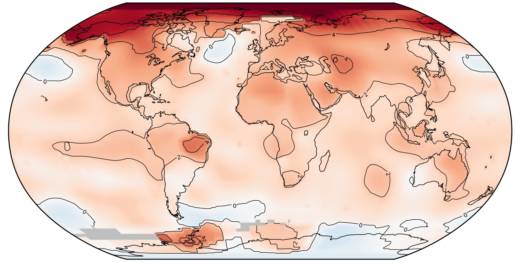For three years in a row now, our Earth has experienced record high temperatures.
On Wednesday, NASA and the National Oceanic and Atmospheric Administration announced that globally, 2016 was the hottest year since modern record keeping began in 1880. It follows 2015 and 2014, which were the previous highs.
The 2016 average global temperature was 58.69 degrees—0.07 degrees above the 2015 global average. And the difference is even bigger when compared to the last century.
During 2016, the average global temperature was 1.69°F above the 20th century average.
Several places also reported historic high temperatures. New Zealand, India and the Arctic all experienced record warm years in 2016. For the U.S., 2016 was the second warmest year on record. In California, 2016 was the third warmest on record at 2.8°F above the mean of 57.4°F.

